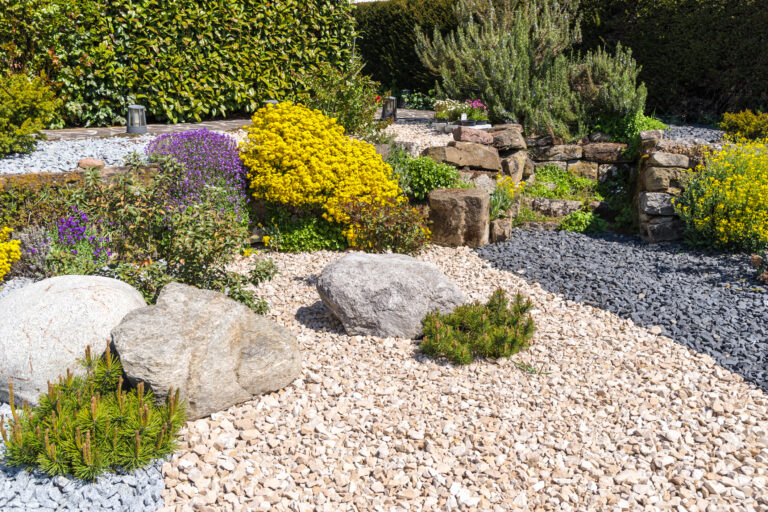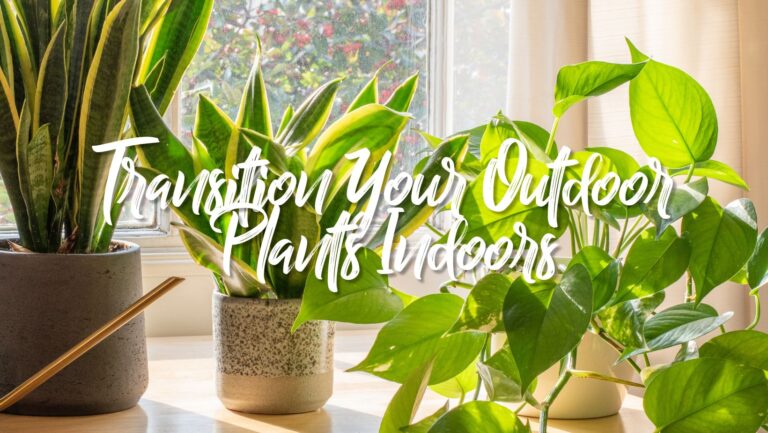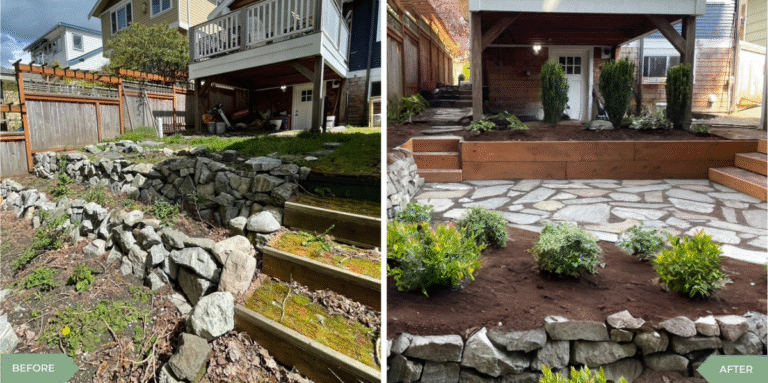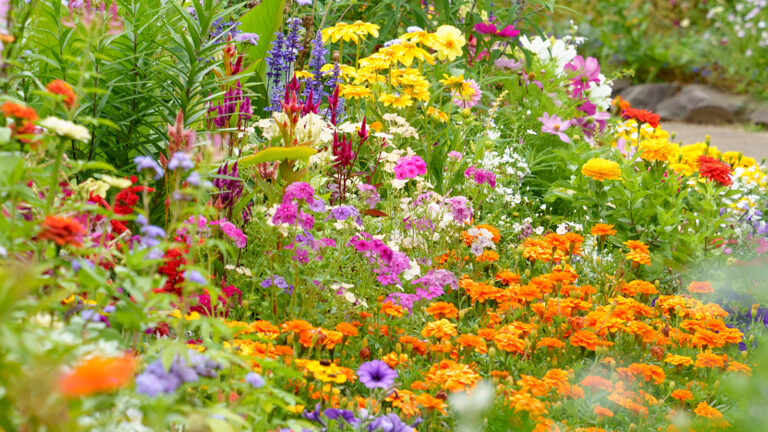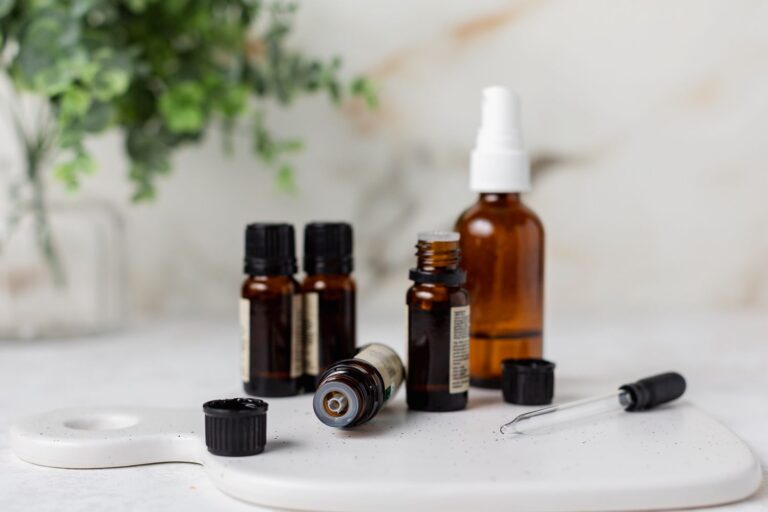End of Summer Container Care: Complete Winterizing & Replanting Guide
Summer flowers are beginning to fade, and the temperature is beginning to lower, leaving your container garden in a critical position. The decisions that you make over the next few weeks determine whether your potted plants will make it into the winter season or find your plants in the graveyard of the container garden. However, it is often omitted in most gardening articles: winter care of containers is not just a question of keeping the plant warm, but concerns the life of the soil, the makeup of the pot, the micro climate around the plant, and how the plant utilizes the energy, which are the issues that determine whether the plant is to survive.
The harsh truth? The winters experienced by container plants are much more difficult than those experienced by garden plants buried in the soil. Earth is a natural blanket protecting the garden plants and container plants are exposed to hot and cold temperatures during the same day and in some cases 40°F in a day and are blown by the winds which dry up the leaves and the freeze thaw cycle which can drown the roots.

This guide presents some of the proven steps, which greenhouse experts take into consideration to keep 95% of the plants alive- far much more than moving tender plants inside.
Timing the Critical: When Summer is Over and Winter is Ready
Your container garden has its time despite what the calendar tells you it is August. Due to the decrease in the length of days and nights, plants trigger internal processes that prepare them to endure cold. You can increase winter survival by this change, which begins 6-8 weeks before the first frost that you anticipate.
Even professional growers understand that timely end of summer can be determined by so many factors that so many home gardeners overlook: your specific USDA zone, the weather created by buildings and hard landscapes, the heat qualities of your pot, and the root-to-shoot proportion of the plant.
A terra cotta pot in a sunny balcony in Zone 5 has had very different threats compared to a plastic pot beside a south facing wall in Zone 7, but most guidance treats them identically.
Successful winter care begins with the observation that roots of container plants are 20-30°F colder than ground roots at the same depth. Research from Penn State Extension confirms that roots of above-ground container plants can reach the same temperature as winter air, making them far more vulnerable than their in-ground counterparts. It is referred to as thermal isolation and has caused some plants that were supposed to withhold in Zone 5 to perish in a container in a Zone 6 winter.
Step 1: Winter Readiness of Your Container Garden
A complete check is required before you dig or purchase new plants and it is called the winter vulnerability assessment. Growers consider five major areas that determine whether containers will succeed or merely survive.
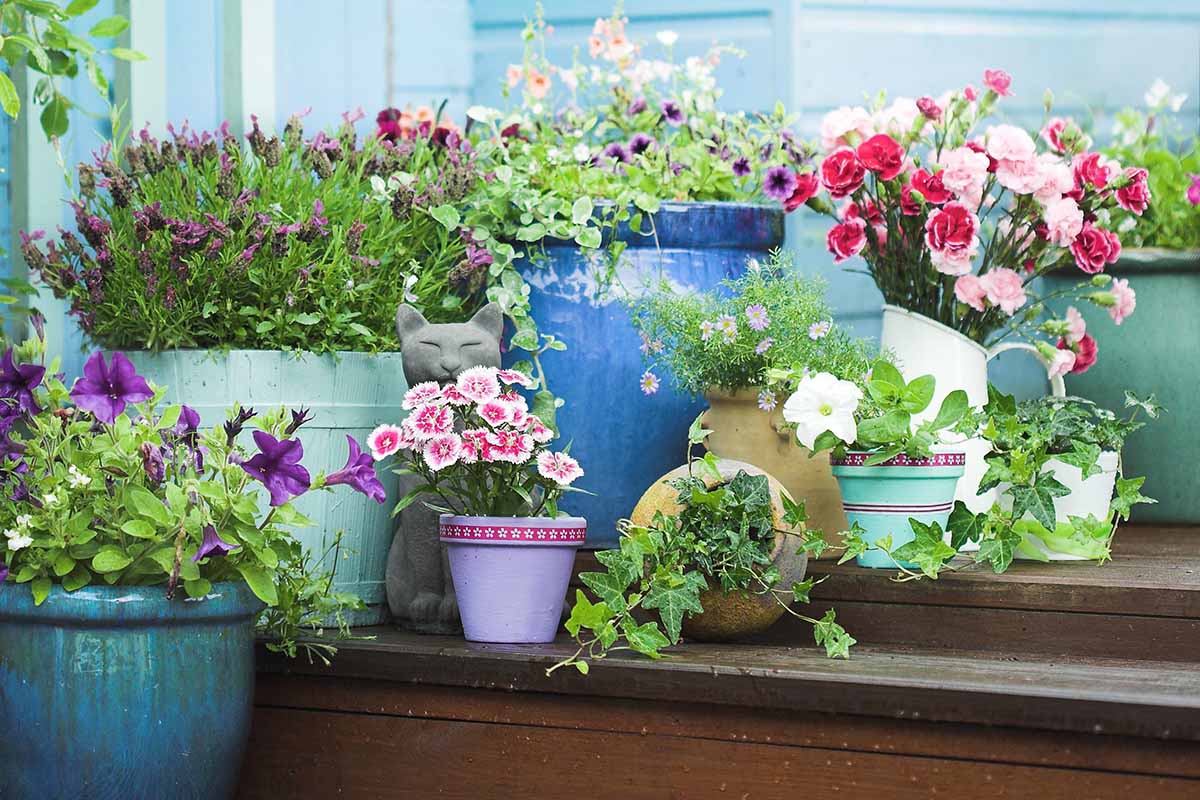
Container Material Selection
The first thing of defense is the container material, but most gardeners use pots based on appearance rather than functionality. Terra cotta is porous and traditional to look at. It is like a sponge and absorbs water and when this water freezes it swells and cracks the pot on the inside. According to research on container materials, untreated porous containers such as terra-cotta and ceramic tend to crack and break with freezing and thawing cycles.
Terra cotta is an unprotected material that breaks 60 percent in damaging winters but plastic or composite pots break 8 percent. A change in pot material can only assist, the right prep is also necessary to prevent soil expansion and damage of roots.

Soil Mix Optimization
The soil mix is quite important besides drainage. Peat moss is 30-50% of standard potting soils and when it freezes and thaws it forms small particles that carefully fit around roots and block off air. To maintain the soil loose during freeze thaw processes and enhance drainage, growers incorporate 20-30 percent minerals such as perlite, pumice or coarse sand.

“Roots are much less cold-hardy than shoots and unlike field grown plants, the roots of container-grown plants are not buffered from cold temperatures by the soil.”
Plant Selection and Hardiness
Selection of plants must understand the distinction between the above-ground and below-ground cold tolerance. Although air reckons Zone 6, container roots are cold on Zone 4. The University of Massachusetts Extension advises going two zones colder with containerized plants to account for root exposure. That is why a hydrangea labelled as hardy to Zone 5 may die in a pot, but survive in the garden.

The growers typically harvest items that are rated to two zones colder than your actual zone since they anticipate that you will have the perfect pot conditions which home locations can hardly match.
Step 2: Protocol of Strategic Container Preparation and Cleaning
The difference between pots that drag on through centuries and those that disintegrate after a single winter is closed by preparing that most of us forget.
The professional nurseries begin by getting all the soil out of it- a move that appears strange since we believe that the potting soil can be used again. Natural soil may retain the salt content of fertilizers, and thus decrease cold tolerance, and shredded organic matter may leave air pores that damage root insulation.

Fungi and bacteria are also found in old soil and thrive during winter in wet and cold seasons.
The Three-Step Sterilization Process
The process of cleaning is not a hose rinse. The sterilization applied by growers eliminates bad microbes in three steps which kill 99.9 percent. First mop all vegetable debris and soil with a hard brush, particularly drains. Second, prepare a cleaning solution: 1 cup of bleach/gallon of warm water, 2 tablespoons of mild dishwasher soap. Small pots can be soaked and sprayed or sponged and kept wet after 10 minutes.
Third, dry dry well and spread food-grade mineral oil in porous pots such as terra cotta or concrete, in a light layer. This oil keeps water out and can increase the life of the pots 2-3 times in areas where there is freezing.
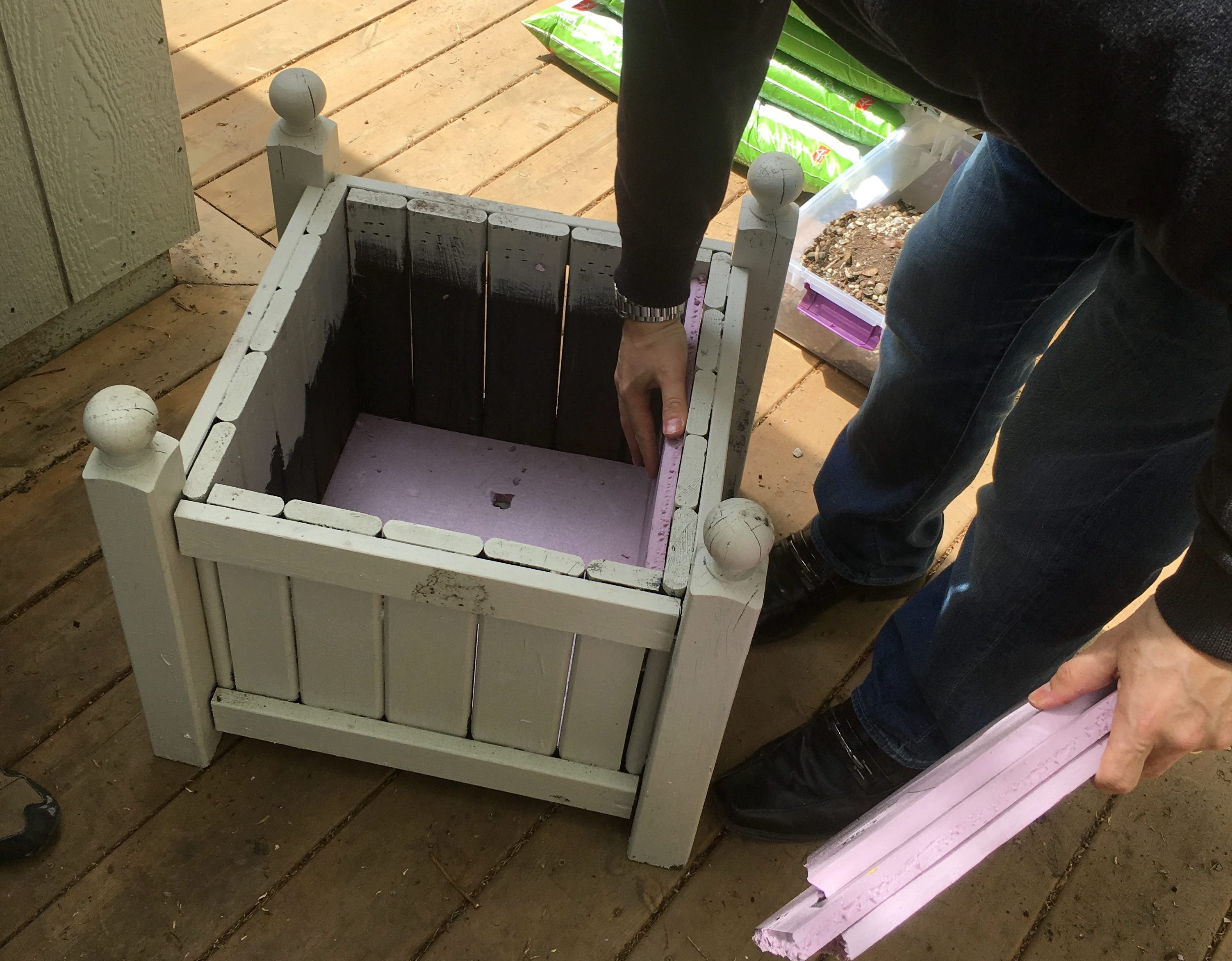
Step 3: Learn to Art of Fall Container Refresh
The period after the summer and the beginning of winter is an opportunity to maintain the garden as bright and cold ready.
This method is referred to as strategic transition planting which involves replacing summer annuals with hardy fall plants which retain color and aid the survival of perennials.
Cold Conditioning and Plant Selection
The process of cold conditioning is required by success, and it gradually prepares plants to lower temperatures and brief days. Fall plants are expected to contain natural antifreeze substances. An example is kale and cabbage to produce sugars that reduce the freezing points by 5-10°F and pansies and violas which produce sugars that prevent ice in leaves.

Rejuvenate the soil by replenishing the nutrient deficiencies caused by summer watering which washes away essential nutrients such as potassium and phosphorus. Apply a fall fertilizer 3-10-10 (NPK). The ratio develops roots and restricts the growth that may freeze. It also includes such micronutrients as silicon and boron to fortify the walls of the cells.
In selecting fall replacements, it is important to think of the way in which it forms good microclimates. Tall grasses or buildings provide protection to the fragile plants and include thermal mass to level the heating and cooling oscillations. Plants with evergreen foliage, such as small conifers or woody herbs, maintain the constant photosynthesis during winter, increasing the temperatures of the pots 2-3°C- even enough that some species marginally hardy can survive.
Step 4: Professional Overwintering Strategies
The distinction between amateur and professional is apparent in the case of overwintering, where the outcome depends on tiny details. Simple instructions are to take innocent plants indoors, but the professional engages science to establish the light, humidity, temperature, and disease management.
To begin with the indoor winter care, it is necessary to understand that temperate perennials require a certain amount of cold to remain dormant. Moving vegetation to a place where there is warmth will disrupt its rhythm leading it to premature growth and become weak.

The professional way would be to keep the real chillers external to cool stores and only include the tropical or subtropical plants indoors.
Indoor Storage Requirements
Container plants prefer the greatest amount of light at room temperature (35-45°F) and 40-60 percent humidity to prevent lipid permeability and ensure that leaves remain rigid and do not grow. Illinois Extension recommends unheated garages, sheds, or cool basements with temperatures between 20°F and 45°F for proper dormancy.
To make this, modify the basement or garage area: add light bouncing surfaces, add fans to get the air moving, and humidity control through pebble trays or small humidifiers. To maintain photosynthetic activity, but allowing no large growth spurts, the growers also illuminate the low-light lamps 12-14 hours per day.

Thermal Banking Method
Those plants that are exposed to the outside employ a method referred to as thermal banking. This brings high-thermal-mass materials, such as water-filled containers, stone blocks, bricks, close to pots. They take in heat on sunny days and give it off during the night increasing the temperature of the pot 8-12°F.
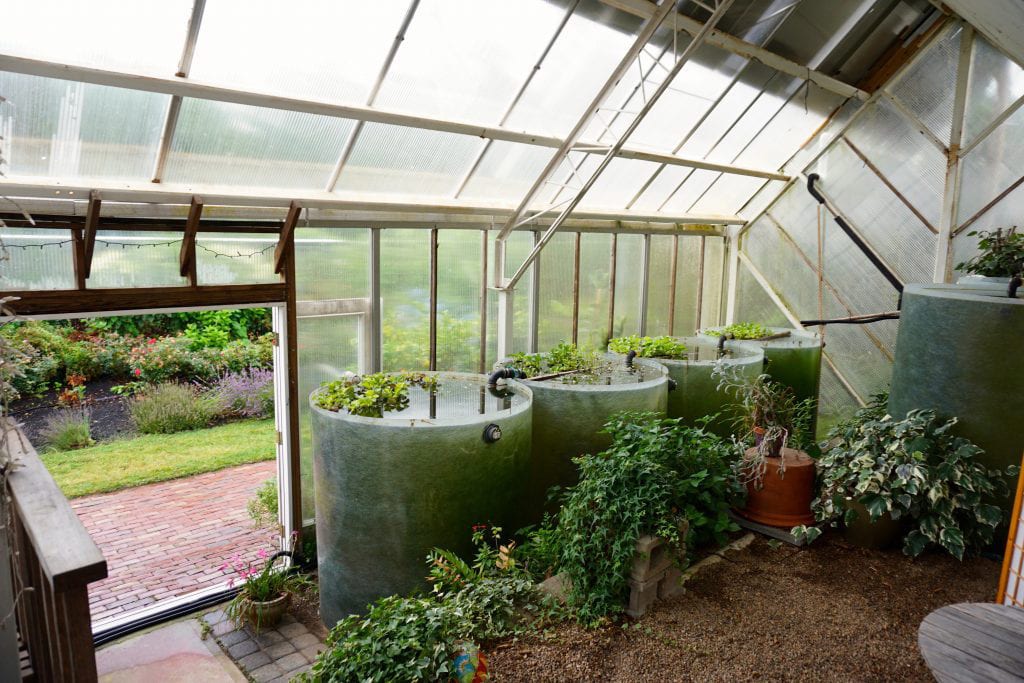
Extra windbreaks and mulch are also beneficial as they allow the plants of zone 6 to live in the real zone 4 conditions.
Step 5: Advanced Container Material Science and Protection
The awareness of the reaction of pot materials to winter makes the selection no longer the aesthetic choice but the survival strategy.
Terra clay is porous and thus when water is frozen, it interferes with and breaks pots. Not every terra cotta is that susceptible. Fired at temperatures over 1800°F, Impruneta clay is less porous and can be re-frozen and thawed several times; it is 3-4 times more expensive, and more resistant to cold. Research on Italian Impruneta terracotta shows these high-fired pots can withstand temperatures as low as -22°F due to their unique clay composition and firing process.
Plastic pots do not lack problems. Polyethylene as low grade as possible could crack at temperatures lower than 20°C and fracture by the impact of ice or snow. Flexible to -40°F, UV stabilized high-density polyethylene (HDPE) does not degrade under the sun. Wall thickness is important Pro grade pots have three to four times the thickness of the wall, which maintains root zones at 5-7°F warmer than with thin walls.
Wooden pots are used to warm plants using natural insulation but they should be constructed with care. Cedar and redwood are resistant to rot; however, they need to apply stainless steel in their installation to prevent corrosion. Pro wooden pots allow wood to expand freely and are not confined by water and are typically elevated on plastic feet so as not to rest on wet ground.
Step 6: The Entire Winter Maintenance Plan
It is more than merely checking watering in winter: good winter care is a continuous plan that monitors microclimates, modulates protection and corrects early problems. This schedule is able to increase the survival rate of the normal 60 to 70 percent to above 90 percent using prepared pots.
The calendar begins at the end of the transition between the fall and early winter when plants go into a dormant state but are not yet frozen. Plants accumulate sugar within the next 4-6 weeks that prevent freezing and develop protective bark.
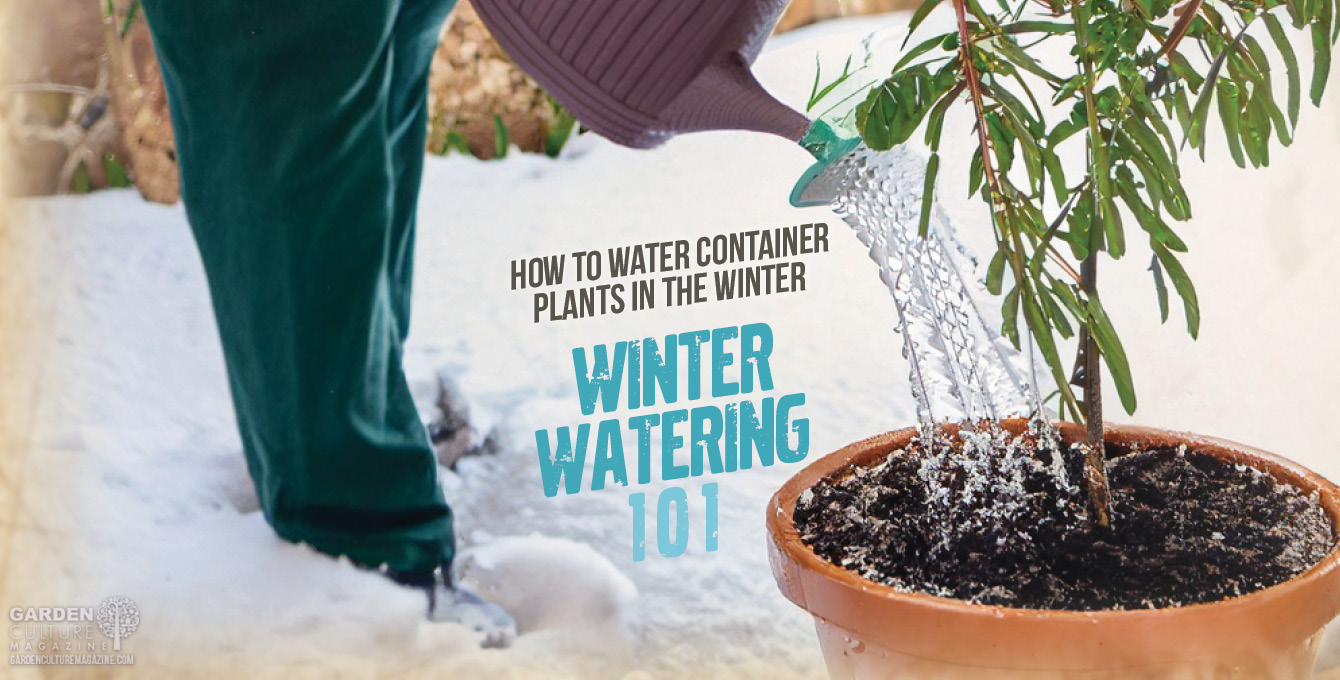
In this time, the growers apply anti-desiccant sprays on evergreen leaves, install windbreaks, and relocate pots to winter locations.
“According to Rutgers Extension research, anti-desiccant treatments can reduce plant moisture loss by 15-20% during winter months when properly applied.”
Winter Watering Protocol
Watering during winter is a misconceived thing. Water when soil feels dry does not take into consideration temperature and depth influence on moisture. The growers have sensors that measure the soil on the roots, with the desired amount being 40-60 percent field capacity to prevent drying and not excessively wet since this causes anaerobic air pockets when the soil undergoes freeze-thaw phases. University of Massachusetts research confirms that moist media freezes slower and releases heat compared to dry media, offering protection to roots.
Checks to be made monthly will involve cover examinations, drainage inspections and plant scrutiny. Covers may get damaged by wind, and this exposes the plant to harsh cold. Drainage holes may ice up or get blocked up so that roots become waterlogged and thus die although the air is not below freezing.
How to Troubleshoot Winter Container Problems
The problem affecting even experienced growers occurs in winter, yet it can be solved by professionals, who have to identify the actual cause, not its symptoms.
It is often attributed to dry soil that evergreen leaves usually dry in winter but in fact, transpiration is the cause that overtakes the delivery of moisture by the roots. It is not a question of water more, but of wind blocked, of humidity added, of pots in the place of the buildings or trees which protect them.
Even good watering in winter causes root rot due to poor drain and small temperatures which freeze the soil. Mixed pot in old forms degenerates to small particles and it does not allow the flow of water and it contains excess moisture. Pro growers inject 20-30 percent minerals, place pots on feet and have sensors that alert of danger before the damage takes place.
Frost heaving – Soil pushing the pot up when it freezes – Frost heaving strikes hard upon containers Since all the soil may freeze. Advantages of root zone insulation such as polystyrene foam, mulch which levels temperatures and the selection of pots with straight sides that allow soil to expand without wall rupture.
Economy Analysis: Winter Winter Protection Strategies, Cost Effective
The awareness of prices of various winter protection methods assists the gardeners in determining which ones are good and affordable. Experts consider the initial expenses as well as the future expenses of purchasing containers and new plants.
Simple winter protection of a common container garden (estimated 10-15 medium size pots) costs $50-150 on items such as burlap, mulch, pot feet, and basic insulation. One can save 70-80 percent of relatively sturdier plants all through the winter with this cash, which is a fair bargain against purchasing new plants every year at 200-400 dollars. The disadvantage is that you need to change the materials annually and you still have not solved the major issues with the containers.
Intermediate protection refers to having superior containers and a definite winter plan. Replacement of regular terra-cotta by freeze-resistant ones costs $150-300 but can last 10-15 years long rather than 3-5. The thermal banking of water into the pots (adding water) costs 75-100 and has the ability to maintain the temperature more constant by 10-15 degrees which gives the plants the impression of being in a warmer climate.
Cold frame, heating cable, a few of the main plants, and automatic watering is applied to the advanced protection. These are cheaper systems which have to cost between $500 to 1000 dollars to install and will keep over 95 percent of the plants alive during winter and will also save time when attending to the plants. Over the course of 10-15 years, they tend to be cheaper than purchasing new plants over and over and are particularly inexpensive with rare or special plants.
Unless you take good care of the garden, it is not only plants that you are losing. You must also replace soil, repair or buy containers and you have to spend much time re-creating the garden every year. Experts indicate that good winter protection normally pays in 3-4 years since it reduces the costs of soil and plant replacement and also maintains the health of plants.
Developing Winterization of Containers Sustainably
The modern container gardeners are not only concerned about the survival of plants but also they are environmentally friendly. Good winter plans also minimize wastage and efficient utilization of resources and keeping of plants in good health.
One enormous step towards being more sustainable is soil management as it is estimated that many individuals discard a significant portion of potting mix on an annual basis. Used mix is made into compost by professional growers. After heating it to more than 130°F during 21 days to kill bugs and weed seeds, they add fresh plant food and minerals. This allows them to purchase 60-70 percent of the new potting soil but still have the plants growing properly.
Maintaining containers in a good condition by winter storage and protection consume fewer resources and generate less waste. By cleaning them annually, sprays and proper storage, the professionals store containers with 15-20 years. The replacement of containers by most of the people is every 3-5 years, thus the professional approach consumes 300-400 percent fewer resources than the amateur approach.
Conserving energy in the winter season implies the use of sun, heavy materials that retain heat and natural insulation as opposed to electrical heaters. Good designs install cold frames south-facing, pots with water (thermal banking), straw bale insulation and windbreaks composed of pruned branches and other natural materials. This reduces energy consumption by 80-90 percent over heated green houses and covers the majority of the container plants.
Local Modifications: Strategies Needing Adaptation to Climate Zones
Winters plans must be local climatic. The custom rules that experts make consider the way the weather varies in the area, the time of rainfall, and the response that plants have to the winter.
Containers are the most difficult to store in Northern regions (Zones 3-4). The temperatures drop to -20°C and freeze-thaw occurs throughout the winter. The most critical plants are provided with a lot of insulation, water in pots, cold frames, and heaters by experts. They select the use of containers that are of freeze-resistant materials such as heavy-duty plastic, concrete, and special ceramics.
Central areas (5-6) are less severe in winters, and thus offer a wider variety of choice. When placing pots, guides recommend that they are combined, then covered with mulch and placed close to warm areas such as buildings. Even some of the less hardy plants can be preserved with careful spot choice and moderate protection.
Southern areas (7-8) are subject to rapid changes in the temperature which may result in plants being prematurely grown in warm temperature followed by sudden freezes. The experts hedge against such swings in addition to cold through the means of maintaining daily temperatures constant. Pots tend to be left outside with minimal cover although gardeners are keen on watching the weather and when things become strange then they take prompt action.
Big water bodies provide coastal regions with salt spray, high humidity and low temperatures. It is in good plans that plants that are capable of coping with salt are selected, shielding against salt damage is provided, and replacement upon erection or removal of protection takes place.
End-of-summer maintenance of containers is not a seasonal task. It is a lifetime investment which makes your garden healthy and beautiful, spares you the money of buying new plants, makes the plants perform better and lets you enjoy a beautiful garden throughout the year. These professional techniques and understanding the reasons why plants can survive the winter will make you a good winter gardener.
Your boxes are not mere ornaments, they are habitats which react to intelligent attention. The information provided in this guide provides you with a foundation to transform the way you handle container gardens so that frustration is removed to turn frustration into confident, consistent work that brings positive results despite the weather. When working with such ideas, keep in mind that not all gardens are alike and have to be adjusted to achieve the best result.
Sources:
Penn State Extension – Overwintering Plants in Containers
University of Massachusetts Extension – Overwintering Container-Grown Ornamentals
Illinois Extension – Overwintering Potted Plants
NC State Extension – Preparing Nursery Plants for Winter
International Society of Arboriculture – Winter Protection of Containerized Ornamental Plants
UNH Extension – Overwintering Perennials in Containers


